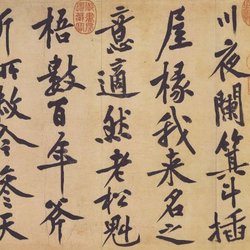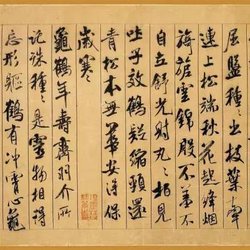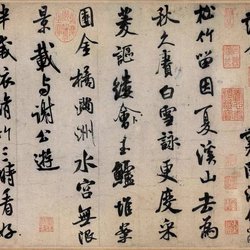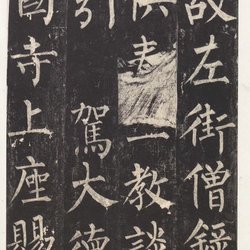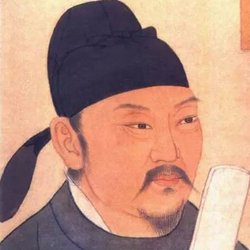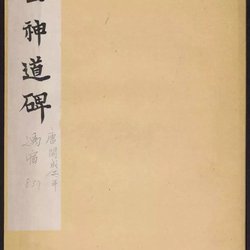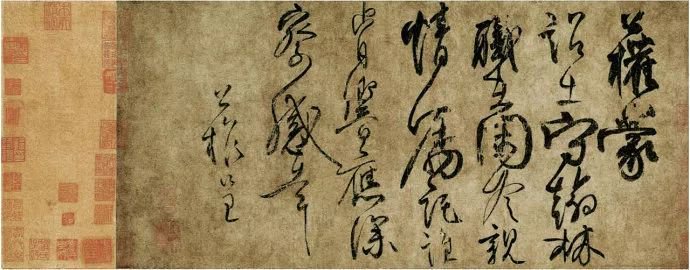
Liu Gongquan, Tang Dynasty, Meng Zhao Tie, paper, running script, 26.8x57.4cm
Collection of the Palace Museum, Beijing
Liu Gongquan (778-865), courtesy name Chengxuan, Han nationality, was from Jingzhao Huayuan (now Yaozhou District, Tongchuan City, Shaanxi Province). He was a famous calligrapher and poet in the Tang Dynasty and the younger brother of Liu Gongchuo, Minister of War.
When Liu Gongquan was 29 years old, he passed the Jinshi title. In his early years, he served as secretary of the Provincial School Secretary and was incorporated into the Li Ting shogunate. He served as an official official in the Muzong, Jingzong and Wenzong dynasties and stayed in the court. He served as an official for seven dynasties, reaching the rank of Prince Shaoshi, and was granted the title of Duke of Hedong County. He became an official as Prince Taibao, and was known as "Liu Shaoshi" in his later life. In the sixth year of Xiantong (865), Liu Gongquan passed away at the age of eighty-eight, and was given posthumously to the crown prince and grand master.
Liu Gongquan's calligraphy is famous for his regular script. He is as famous as Yan Zhenqing and is known as "Yan Liu". He is also known as the "Four Masters of Regular Script" together with Ouyang Xun, Yan Zhenqing and Zhao Mengfu. He first learned calligraphy from Wang Xizhi. Later, he studied the calligraphy of famous calligraphers of the Tang Dynasty. He absorbed the strengths of Yan Zhenqing and Ouyang Xun, incorporated new ideas, and created his own unique "Liu style", which is famous for its strong bones. Later generations have "Yan Jin Liu Gu" reputation. The handed down steles include "Diamond Sutra Engraved Stone", "Mysterious Pagoda Stele", "Feng Su Stele", etc.; cursive scripts include "Fu Shen", "Sixteen Days", "Hui Xiang Tie", etc., and there are also ink ink "Mongolia" "Edict", "Wang Xianzhi's postscript to send pears". Liu Gongquan is also a poet. Five of his poems are preserved in "The Complete Poems of the Tang Dynasty" and one poem is preserved in "The Complete Poems of the Tang Dynasty".
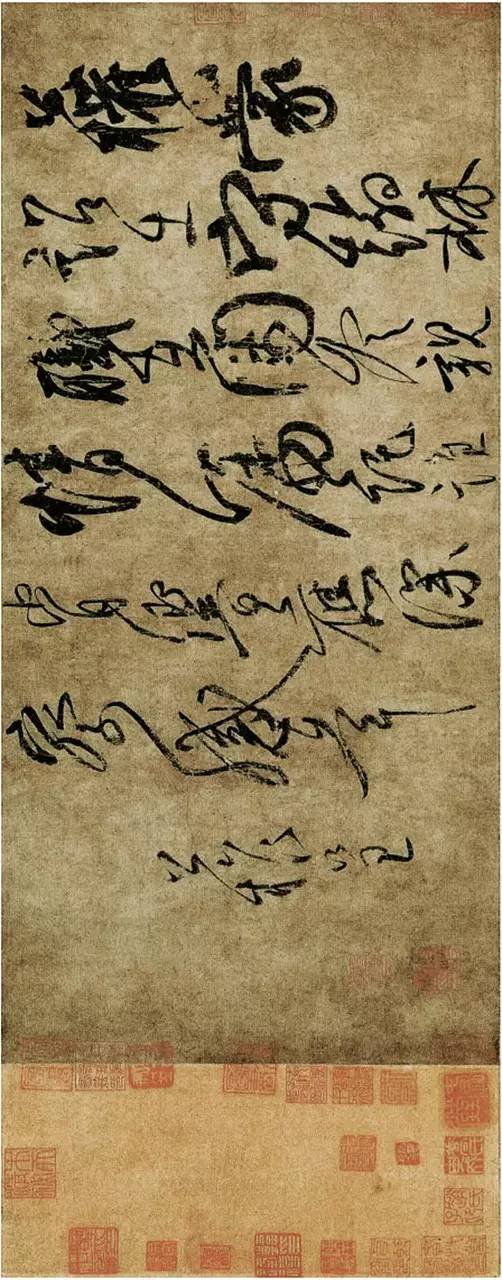
Explanation of "Mengzhao Tie":
The public power was entrusted with the imperial edict, and he went out to guard the Imperial Academy. His position was idle and cold, and he was entrusted by family members. I am deeply grateful to anyone who is willing to respond. Public power submitted.
The seals in the collection include "Shaoxing", "Ruiwen Books" and "Xianzhi Shang" in the Song Dynasty, "Zhao Shi Zi'ang", "Qiao Shi Zhencheng" and "Qijun Zhang Shenxing" in the Yuan Dynasty, and "Feng Shi Lu'an Collection" in the Ming Dynasty. "Picture and Book Seal", Qing "Anqi's Seal", "Wang Changzong", "Chen Shi Yanlian", "Han Shineng Seal", "Han Fengxi Seal", etc.
HD Appreciation
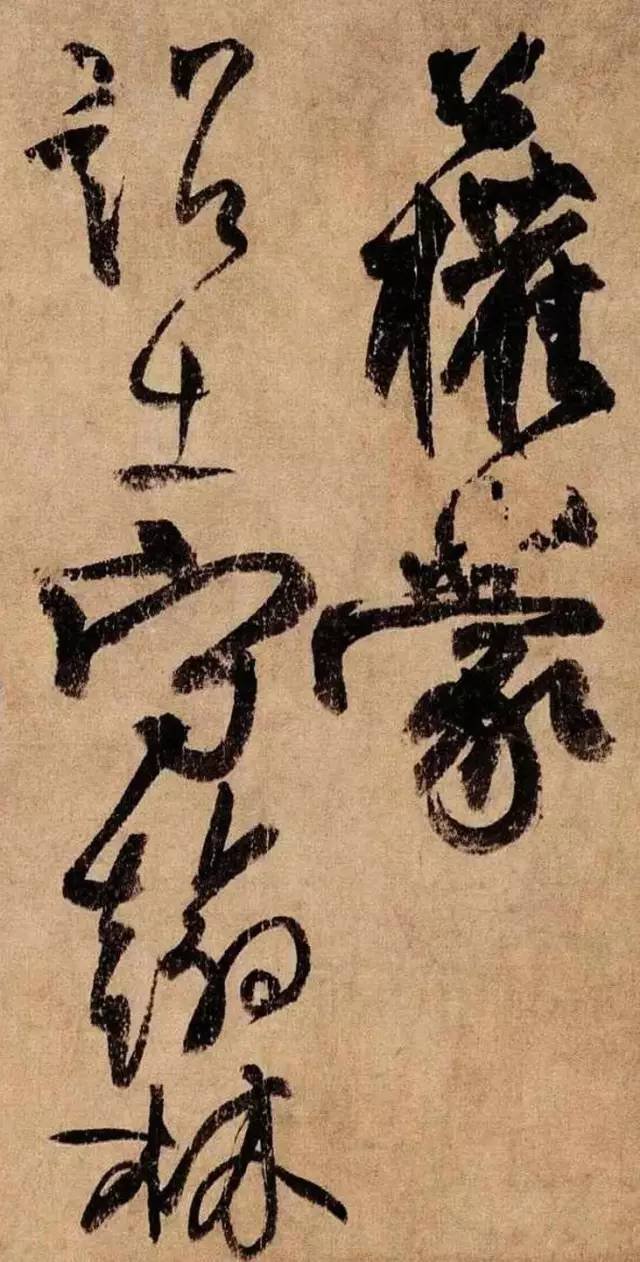
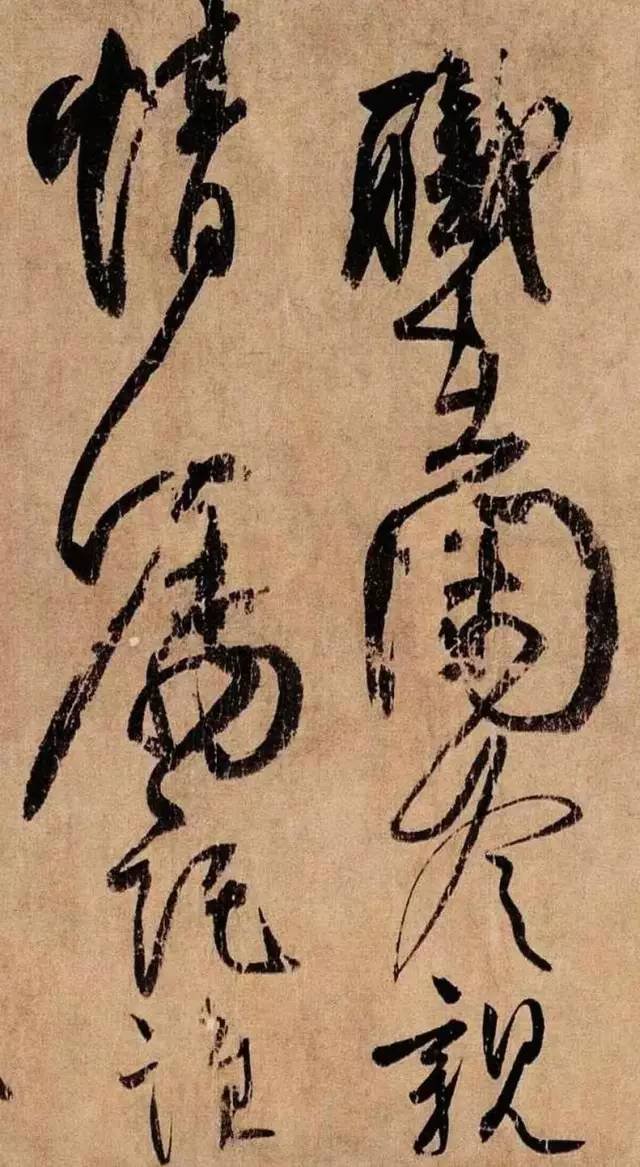
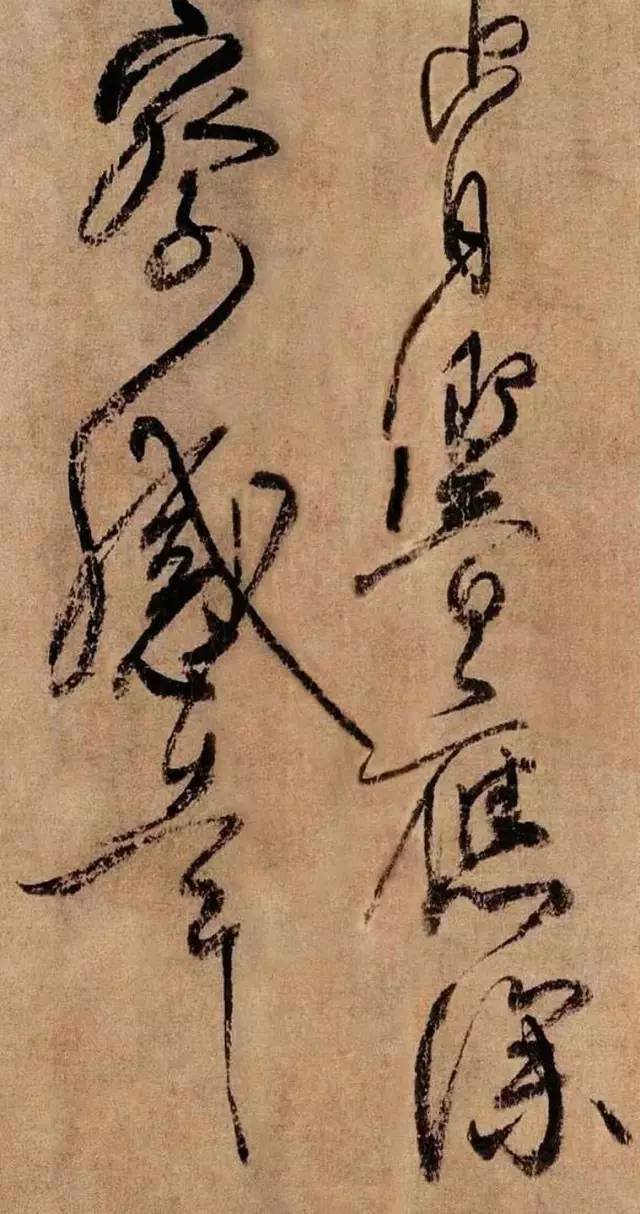
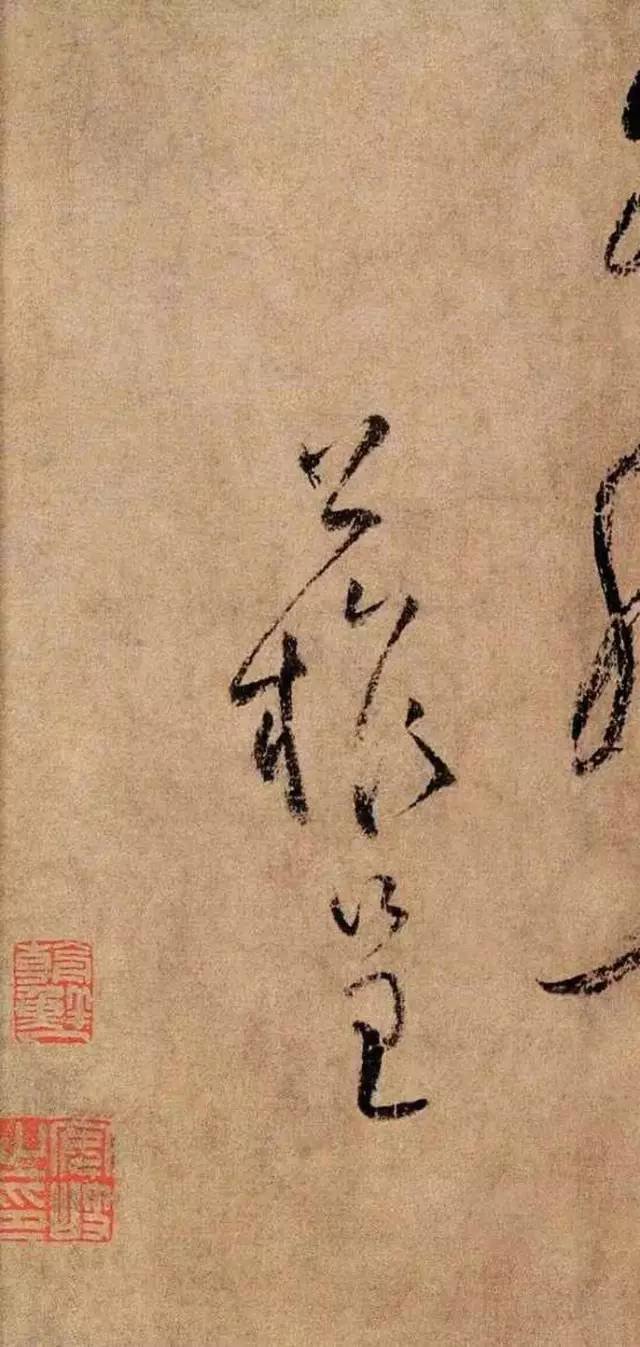
This post is said to be a letter written by Liu Gongquan, also known as "Hanlin Tie". It has 7 lines and 27 characters in large running script. It was written in the first year of Changqing (821 AD) when Liu Gongquan was 44 years old and in the prime of life. It was he who It was the peak period of calligraphy creation, so the characters were like a giant flying in the sky, swimming alone, with strong brushwork and bold momentum. In the first line, the three characters "Gongquan Meng" are connected continuously. The characters are huge and the writing is powerful and horizontal. It is like seeing Liu Gongquan's strong blood and spirit. The next three lines of brushwork move like dragons and snakes in a series of twists and turns. The sizes of the lines are staggered. When the sharp edge breaks out, it breaks the air and kills the paper. The hairspring is both hard and soft, and the momentum is released without any hindrance. In the last three lines, although the characters change from large to small, and the format changes casually, transforming into a thin and strong appearance, the energy is connected and the heroic spirit flows until the final chapter.
Later generations once suspected that it was fake, but Ming Zhan Jingfeng's "Xuan Lan Bian" said: "Liu Chengxuan's ink calligraphy volume is authentic. The brushwork is vigorous and vertical and horizontal, and it is as expected. It is because he started his own family from Emperor Wen and Daling, which is wonderful. I play tirelessly all day long." Moreover, this calligraphy was collected by the Imperial Household of the Song Dynasty, Han Shineng of the Ming Dynasty, Feng Quan and An Qi of the Qing Dynasty, and later entered the Imperial Household of the Qing Dynasty, where it was engraved in the "Sanxitang Dharma Calligraphy".
It was recorded in "Dongtu Xuanlan" by Zhan Jingfeng in the Ming Dynasty, "Nanyang Calligraphy List" by Zhang Chou, "Authentic Relics Daily Record", and "Moyuan Huiguan" by Qing Anqi.
There are many disputes about the authenticity of "Mengzhao Tie". The problem lies in the two sentences "go out to guard the Hanlin" and "the job is idle and cold". The word "go to guard the Hanlin" in this post does not conform to the title of the official duties at that time, so it may have been written by the Song Dynasty people based on the general meaning of "Zi Si Qi Tie". There is a big difference in the strokes used in the first four lines and the last three lines of calligraphy. Some scholars believe that the character "quan" in the last line is loosely tied and the strokes of "quan" in the last line are not structured. This is quite different from Liu's charming and vigorous calligraphy style. According to This concludes that this post is not a Liu script but a Song copy.
Mr. Qigong thought it was a forgery, "but I know that the original ink in Jinzhuan was written by someone else, and the text was abridged without leaving any words." However, Mr. Xie Zhiliu believed that it was a masterpiece of Liu characters and was undoubtedly authentic. According to Mr. Xie Zhiliu's textual research, the scholars of the Hanlin Academy "worked together quite a lot", and they were ashamed of public power, and there was a saying that they "worked in idleness and coldness"; "going to guard the Hanlin Academy" just means that they came out to hold an official position in the Hanlin Academy. Mr. Cao Baolin also believed that there were many examples of officials using "chushou" when they came to work in the Secretariat of China and the Hanlin Academy. "chushou" was a common term in official circles, so the theory of forgery is difficult to establish. Xie Zhiliu believes that this post is majestic and powerful, not only the structure of Liu's book, but also the typical style of Tang Dynasty Dharma books (Jianyu Zamanuo).
Mr. Qi and Mr. Xie often have different opinions on the identification of ancient monuments. Mr. Qi mainly relies on the identification of literary and historical materials, while Mr. Xie relies on artistic feelings; Mr. Qi's words are reasonable, and Mr. Xie's feelings are very keen; As soon as Mr. Qi came to his conclusion, he felt like he was disgracing the scenery, but when Mr. Xie said something, he felt like he was speaking too hard to make sense? Who is right?
It's hard to make a conclusion, but all we know is that this is a majestic and extraordinary classic ink painting.

